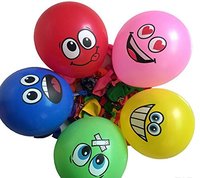- Home
- Awe (NEW 7/24)
- This ain't "happy-ology"...
- Philippiness 2/23 Science of Happiness - Class & Life
- SofH - class & life Spring 2022
- NEW - Time Confetti
- NEW - Happiness Hacks
- NEW - The Power of Fun
- Getting started
- Introducing happiness
- Main Activity Download Center
- 10 Minutes for Happiness (quick tasks)
- Happiness Haiku (consolidation)
- Positive brain chemicals
- New! 3 minutes for positivity
- Becoming Friends
- Savoring
- 5 photos (A savoring task with student projects)
- Flourishing
- Flow
- Positivity
- Laughter
- Meditation
- Mindfulness for kids
- Balloon toss (icebreakers)
- Song/lip dub (Marc's Ss): Pharrell William's HAPPY
- Activities from other teachers
- Don't laugh at me
- Videos of Marc's Talks
- Posters
- Bookshelf (NEW books listed)
- Links
- NUFS MA TESOL task page
- English Firsthand syllabus tie-in
- Monk for a Month (mindfulness)
- Misc PowerPoint downloads
- Contact Marc
- .
- InnovationsPosPsych downloads
- Positive Psychology in SLA (book)
- ..
- NEW BOOK
- test page
- songs for distance teaching
Balloon toss

Notes: For a PDF version of this page, click HERE.
The first couple activities might be more appropriate at the beginning of the school year when students are still learning each others’ names.
There are lots of activities that have students in circles throwing things to partners. Often, it involves balls (which, of course, bounce away if the partner misses the catch). Stuffed animals are good, too. I like using balloons. There is a time delay as the balloon drifts to the partner. That allows “thinking time.” Also, sometimes balloons don’t go where you think they will. Unexpected change keeps people’s attention.
All of these activities take place in groups of 8-10, although those numbers are flexible. Students stand in a circle. Ideally, there is mainly empty space between the students. If that is not possible, they can play by hitting the balloons over their desks. However, that won’t work with the Off someone’s head activity.
If balloons aren’t available, you can play the games with stuffed animals or even balled-up newspaper.
This is for you, (name). (An icebreaker for learning names.) On the board, write, “This is for you, (name). Thank you, (name).” Students work in groups of 8-10. They stand in a circle. They each introduce themselves. You might have them repeat each name by saying, “Nice to meet you, (name)”. Then give one student a balloon. That student hits the balloon to another student, saying, “This if for you, (name).” The student tries to say, “Thank you, (name),” and “This if for you, (name)” to the student s/he is hitting it to. They try to do this without pausing. They should make sure everyone gets the balloon once before they start repeating names. After a few minutes, have them change positions in the circle to make sure they really are learning names and not just the positions people are standing in.
HERE is the PowerPoint I use for this.
Positive words. Write a series of positive adjectives on the board. Either provide them or ask students what some of there favorites are. Possibilities: awesome, wonderful, cool, fantastic, tremendous, brilliant, beautiful, kind. Students hit the balloons to each other, saying, “You’re (word), (name).” Partners answer, “Thank you, (name)!” They continue.
Variation: Ask the students for some of their favorite positive words in their native language. As a group, try to come up with a similar word in English. Use those words.
Compliments. Like “Positive words” (above) but they use compliment phrases. Write a series of compliments on the board. You can provide them or elicit them from the students. Possibilities: That’s a beautiful shirt! You’ve got a great smile! You’re really nice. Cool jacket! You’re always on time. You’re so smart. You are really creative.
This is a variation on activity 2.4.1 in English Teaching and the Science of Happiness.
Good things in my life today. Students think of 3-4 good things in their lives today – either something good that actually happened today or recently or things that are always true. On the board, writes some ways to respond: Great! Cool! You’re lucky! You deserve it! Nice! Sweet! Etc. One person calls out a sentence as s/he hits the balloon. Everyone responds. Then the next person says one, etc. After a few minutes, you might want to have people change groups and continue.
Positive sentence starters. Brainstorm positive ways to start sentences. Some examples: I love it when…, Here’s some good news, …, Something that makes me happy is…, Isn’t it great when…? Love is…, I enjoy…, I smile when…, etc. One person starts, hitting the balloon and saying a sentence. Partners who receive the balloon ask a follow-up question, then it the balloon back to the first person. There should be at least two follow-up questions for each sentence starter. Then the next student continues with a different sentence starter.
Off (name’s) (head). Brainstorm body parts that one might use to hit the balloon. Note that, for this game, “hands” are not allowed. Possible body parts: arm, leg, foot, knee, shoulder, head, chest. Students stand in circles, holding hands. They hit the balloon with any part of their body, saying where it is coming from, (“Off name’s knee”. The next student hits it, saying where it is coming from. They continue, trying to keep the balloon from stopping. Note: This doesn’t work on positive psychology language, per se, but it does build a group spirit (rapport). Also, holding hands during a positive activity is likely to trigger oxytocin, a neurotransmitter (brain chemical) connected with positive emotion.
Balloon race. Students need space to move from one end of the classroom to the other. This might involve moving desks so the rows are wider. Half of each team is at each end of the row. The first two members at one end put the balloon between them. The cannot touch it with their hands. Any other body part is OK. The race to the other end of the room. The next pair takes the balloon back to the starting location. This continues until everyone has had at least one turn. (This is a physical activity. It doesn’t involve language except understanding the instructions. But it develops teamwork and gets the students moving – which increases blood and oxygen to the brain).
Smile emoji balloons. in workshop, I sometimes use smile emoji balloons. But, of course, any balloon will work. Better yet, have students make their own smiling balloons by drawing on the balloons with magic markers.
Enjoy!
© 2018 Marc Helgesen. OK to copy.
www.ELTandHappiness.com
